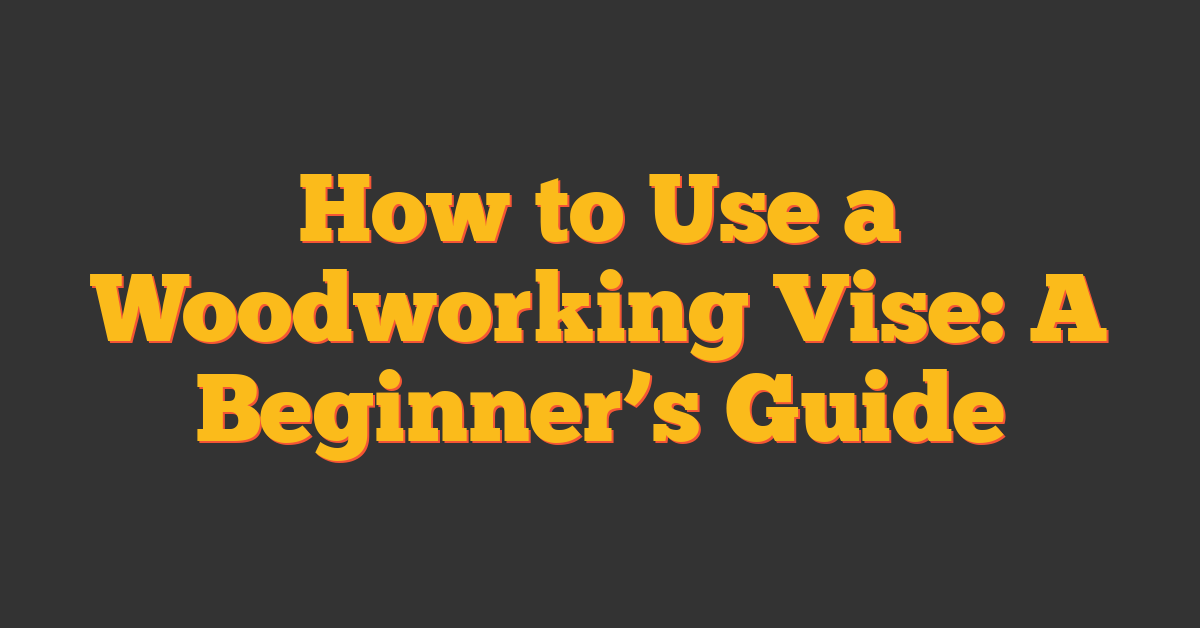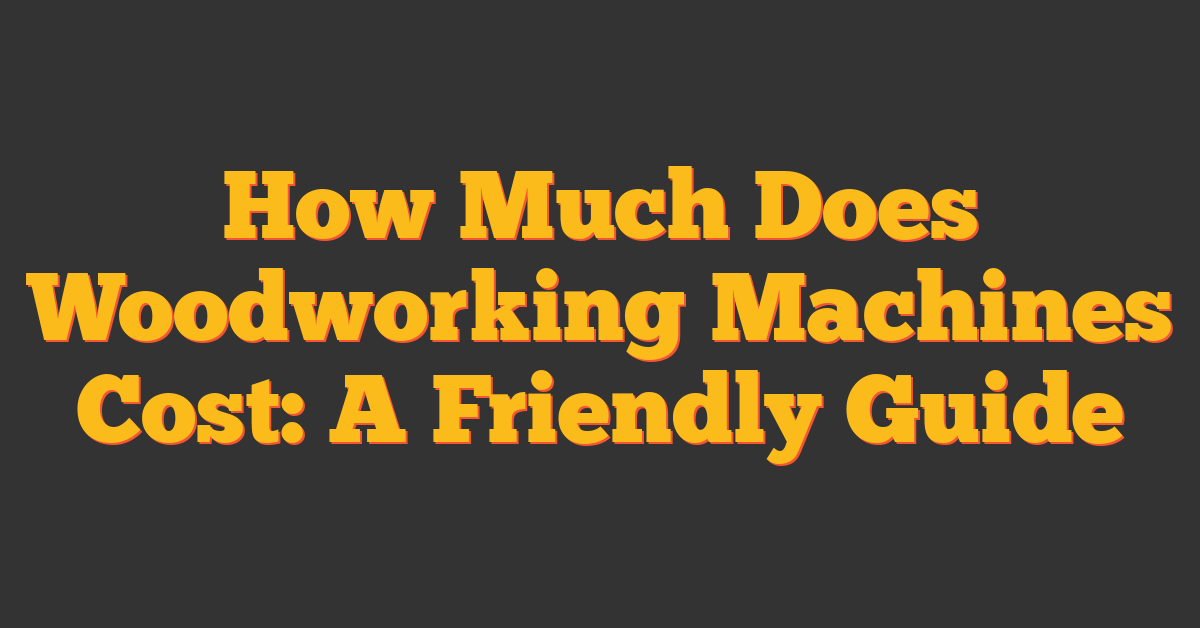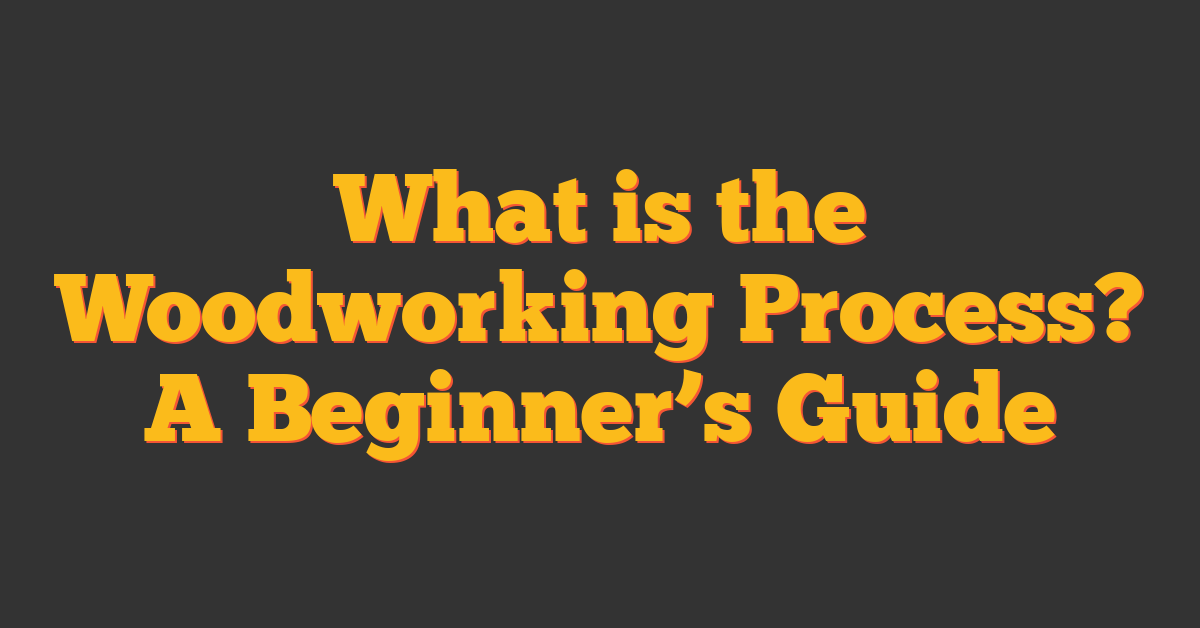Imagine stepping into your workshop without any physical tools, where every design idea comes to life in a virtual space. Virtual reality is transforming woodworking design by allowing you to visualize projects in 3D before you even pick up a saw.
With VR, you can experiment with different materials, shapes, and finishes, making the design process more interactive and intuitive. You’ll catch potential issues early, saving time and resources while bringing your creative visions to reality.
Embracing virtual reality in woodworking opens up new possibilities, making your design process smoother and more enjoyable. Whether you’re a seasoned carpenter or just starting out, VR tools can enhance the way you create and build.
Overview of Virtual Reality for Woodworking Design
Virtual reality (VR) transforms your woodworking design process by immersing you in a 3D virtual workspace. You can visualize your projects from multiple angles, ensuring every detail meets your expectations before cutting any material. With VR, you experiment with different wood types, finishes, and joinery techniques, enhancing your creativity and precision.
Key Features of VR in Woodworking Design:
- 3D Visualization: View your furniture from all perspectives, identifying design flaws early.
- Material Selection: Compare various woods, stains, and finishes to choose the best combination.
- Space Planning: Arrange your pieces within a virtual room to ensure proper fit and aesthetics.
- Precision Measurements: Utilize accurate dimensions to plan cuts and joints, reducing material waste.
- Collaboration Tools: Share your virtual designs with clients or fellow woodworkers for feedback and adjustments.
Benefits of Using VR for Your Woodworking Projects:
| Benefit | Description |
|---|---|
| Enhanced Creativity | Explore innovative designs without physical constraints. |
| Time Efficiency | Quickly iterate and modify designs, speeding up the planning phase. |
| Cost Savings | Minimize material waste by perfecting designs virtually. |
| Error Reduction | Spot potential issues in the design stage, avoiding costly mistakes. |
| Skill Development | Learn new techniques and design principles in an interactive environment. |
Integrating VR into your garage woodworking shop empowers you to bring your DIY projects to life with greater accuracy and confidence. Embrace this technology to streamline your workflow and elevate the quality of your handcrafted furniture.
Key Features of VR Tools
Virtual reality tools enhance your woodworking design process with powerful features. These tools provide precision and flexibility, empowering you to bring your projects to life seamlessly.
Design Visualization
Experience your designs in stunning 3D, allowing you to view furniture from multiple angles. Compare different woods, finishes, and textures easily, ensuring you choose the best materials for your project. Visualizing your workspace helps in arranging pieces accurately, optimizing both aesthetics and functionality.
Real-Time Modifications
Adjust your designs instantly with real-time modifications. Change dimensions, tweak components, and experiment with layouts on the fly. This immediate feedback minimizes material waste and ensures your final product aligns perfectly with your vision.
Benefits of Using Virtual Reality
Virtual reality enhances your woodworking design by offering significant advantages.
Enhanced Precision and Accuracy
With VR, you achieve precise measurements and detailed designs by visualizing projects in a 3D space. Simulating dimensions and components accurately helps you spot and fix potential errors before cutting wood, reducing material waste and ensuring the final piece aligns with your vision.
Improved Efficiency and Productivity
Integrating VR streamlines your design workflow, allowing quick experimentation with different styles, techniques, and layouts. Real-time modifications enable you to make instant adjustments, saving time and boosting productivity in your garage woodworking shop.
Challenges and Limitations
While virtual reality transforms woodworking design, it presents certain challenges and limitations that you should consider.
Cost and Accessibility
Investing in VR technology requires significant upfront costs. High-quality VR headsets range from $300 to $1,000, which might be prohibitive for hobbyists. Additionally, powerful computers capable of running VR software can cost between $1,200 and $2,500. Limited availability of affordable VR solutions can restrict access for many woodworkers. Furthermore, ongoing expenses for software updates and maintenance add to the total investment, potentially outweighing the initial benefits for some users.
Learning Curve and User Adaptation
Adopting VR in your woodworking projects demands time and effort to master new software and hardware. Navigating complex VR interfaces can be intimidating, especially if you’re accustomed to traditional design methods. Transitioning to a virtual workspace may disrupt your usual workflow, requiring you to adapt to different tools and processes. Without adequate training resources, you might encounter frustration and reduced productivity during the learning phase. Overcoming these hurdles is essential to fully leverage VR’s capabilities in your woodworking endeavors.
Comparison of Top VR Platforms
Discover the top VR platforms that can elevate your woodworking designs. Compare their features to choose the best tool for your projects.
Platform A
Platform A delivers robust 3D visualization, letting you examine your furniture from every angle. Its extensive material library includes over 150 wood types and finishes, ensuring precise customization.
Features:
- Real-Time Editing: Adjust dimensions and components instantly.
- Precision Tools: Achieve exact measurements to minimize waste.
- Collaboration: Share and review designs with your team seamlessly.
Platform B
Platform B offers an intuitive interface perfect for DIY enthusiasts. It supports detailed space planning, allowing you to arrange your pieces within a virtual room accurately.
- Component Library: Access a wide range of pre-designed parts.
- CNC Integration: Connect directly with CNC machines for streamlined production.
- Lighting Simulation: Enhance your designs with realistic lighting and textures.
Future Trends in VR for Woodworking Design
Enhanced AI Integration
AI-powered tools assist you by generating design suggestions based on your preferences and past projects. Machine learning algorithms analyze your style, recommending optimal materials and configurations to streamline your workflow.
Advanced Material Simulation
Future VR platforms will offer more detailed material simulations, allowing you to test various wood types, finishes, and textures with greater accuracy. This precision helps you visualize how different materials interact, ensuring your final product meets aesthetic and functional standards.
Improved Haptic Feedback
Enhanced haptic technology will provide tactile responses during your VR design sessions. Feeling the texture of wood or the resistance of cutting tools in the virtual space increases immersion, helping you make more informed design decisions.
Cloud-Based Collaboration
Cloud integration enables seamless collaboration with other woodworkers and designers. You can share your VR projects in real-time, receive feedback instantly, and work together on designs, regardless of your physical location.
Integration with CNC Machines
Future VR systems will integrate directly with CNC machines, allowing you to transition smoothly from design to production. This connection ensures that your virtual designs translate accurately to physical builds, reducing errors and saving time.
Personalized VR Environments
Customization options for your VR workspace will expand, letting you tailor the virtual shop to match your real garage woodworking shop. Personalized environments enhance comfort and efficiency, making your design process more enjoyable.
Increased Affordability and Accessibility
As VR technology advances, costs are expected to decrease, making high-quality VR tools more accessible to hobbyists and small-scale woodworkers. Lower barriers to entry mean more enthusiasts can leverage VR to enhance their woodworking projects.
Enhanced Real-Time Collaboration Tools
Real-time editing and communication features will become more sophisticated, enabling multiple users to work on the same project simultaneously. This capability fosters teamwork and accelerates the design process, allowing you to complete projects faster.
Augmented Reality (AR) Integration
Combining AR with VR will offer hybrid solutions where you can overlay virtual designs onto your physical workspace. This integration helps you better understand how your designs fit within your actual environment, bridging the gap between virtual planning and real-world execution.
Advanced Data Analytics
Future VR platforms will incorporate data analytics to track your design trends, material usage, and project timelines. Analyzing this data helps you optimize your processes, reduce waste, and improve overall project management.
Expanded Virtual Libraries
Expanding material and component libraries in VR tools will provide you with an extensive range of options to choose from. Access to diverse resources ensures that your designs can incorporate the latest trends and innovations in woodworking.
Enhanced User Interface and Experience
User interfaces will become more intuitive and user-friendly, reducing the learning curve associated with VR tools. Improved usability allows you to focus more on creativity and less on navigating complex software, making the design process smoother and more efficient.
Integration with Smart Tools
Smart woodworking tools connected to your VR system will provide real-time feedback and adjustments. For example, measuring tools can automatically update your VR model, ensuring that your virtual designs remain accurate and aligned with your physical tools.
Sustainable Design Features
Future VR tools will include features that help you design sustainably, such as optimizing material usage and suggesting eco-friendly alternatives. These tools support environmentally responsible woodworking practices, aligning your projects with green standards.
Enhanced Security and Data Protection
As VR systems handle more of your design data, enhanced security measures will protect your intellectual property and project information. Robust data protection ensures that your designs remain confidential and secure.
Virtual Prototyping and Testing
Advanced prototyping features will allow you to test structural integrity and functionality within the VR space. Virtual testing reduces the need for multiple physical prototypes, saving time and resources while ensuring your designs are robust and reliable.
Conclusion
Embracing virtual reality can transform how you approach woodworking design. It empowers you to visualize your creations in immersive 3D spaces giving you the freedom to experiment and refine your ideas with confidence. While there are challenges like initial costs and learning new tools the benefits of enhanced creativity and efficiency are well worth it. As VR technology continues to advance becoming more accessible you’ll find even more ways to elevate your woodworking projects. Dive into the world of virtual reality and watch your woodworking designs come to life like never before
Frequently Asked Questions
How is virtual reality transforming woodworking design?
Virtual reality (VR) is revolutionizing woodworking by allowing designers to visualize projects in a 3D virtual space before starting physical work. This immersive experience enables users to experiment with different materials, shapes, and finishes, making the design process more interactive. By identifying potential issues early, VR helps streamline the workflow, reduce errors, and enhance creativity, ultimately leading to higher-quality handcrafted furniture.
What are the key features of VR in woodworking?
VR in woodworking offers several key features, including 3D visualization to view furniture from multiple angles, material selection tools for comparing woods and finishes, space planning for arranging pieces in a virtual room, precision measurements to minimize material waste, and collaboration tools for sharing designs with others. These features provide designers with precision, flexibility, and the ability to make real-time adjustments, enhancing the overall design process.
What are the main benefits of using VR for woodworking projects?
Using VR in woodworking offers numerous benefits such as enhanced creativity, streamlined design processes, time efficiency, cost savings, error reduction, and skill development. Designers can visualize their projects in detail, experiment with various options, and make informed decisions before committing to physical materials, leading to more efficient and effective project outcomes.
Can VR help reduce material waste in woodworking?
Yes, VR helps reduce material waste by allowing precise measurements and accurate planning before any physical work begins. Designers can experiment with different layouts and materials virtually, identifying and correcting potential issues early. This precision ensures that only the necessary materials are used, minimizing excess and contributing to more sustainable woodworking practices.
What are the challenges of adopting VR in woodworking?
Adopting VR in woodworking comes with challenges such as significant upfront costs for high-quality headsets and powerful computers. Additionally, there is a learning curve associated with mastering new VR software and hardware, which can disrupt traditional workflows. Overcoming these challenges is essential to fully leverage VR’s capabilities and integrate it effectively into woodworking projects.
Which VR platforms are best for woodworking design?
Two top VR platforms for woodworking design are Platform A and Platform B. Platform A offers robust 3D visualization, an extensive material library, real-time editing capabilities, precision tools, and seamless collaboration features. Platform B is known for its intuitive interface, detailed space planning, access to a comprehensive component library, CNC integration, and realistic lighting simulation. These platforms cater to different needs, helping users choose the best tool for their projects.
How does VR enhance precision and accuracy in woodworking?
VR enhances precision and accuracy by providing detailed 3D visualizations that help designers spot potential errors before cutting wood. The ability to measure and adjust dimensions virtually ensures that every component fits perfectly, reducing the likelihood of mistakes and material waste. This meticulous planning leads to more accurate and high-quality woodworking outcomes.
What future trends are expected in VR for woodworking design?
Future trends in VR for woodworking include enhanced AI integration for design suggestions, advanced material simulation for accurate testing, improved haptic feedback for better immersion, cloud-based collaboration for real-time teamwork, and integration with CNC machines to streamline production. Additionally, increased affordability, expanded virtual libraries, sustainable design support, and advanced virtual prototyping are anticipated to further elevate woodworking design.
How does VR improve collaboration in woodworking projects?
VR improves collaboration by providing seamless tools for sharing and discussing designs in a virtual space. Multiple users can view and interact with the same 3D model in real-time, regardless of their physical location. This facilitates better communication, allows for instant feedback, and enables collaborative adjustments, ensuring that all team members are aligned and contributing effectively to the project.
Is VR technology affordable for hobbyist woodworkers?
While VR technology offers significant benefits, the initial costs can be a barrier for hobbyist woodworkers. High-quality VR headsets and powerful computers required for optimal performance are often expensive. However, as technology advances, prices are expected to decrease, making VR more accessible to a broader range of users, including hobbyists.
Can VR integrate with CNC machines for woodworking?
Yes, VR can integrate with CNC machines, streamlining the transition from design to production. This integration allows designers to create and modify their projects in a virtual environment and then directly transfer the precise measurements and specifications to CNC machines for accurate cutting and assembly, enhancing efficiency and reducing errors.
What role does AI play in the future of VR for woodworking?
AI is set to play a significant role in the future of VR for woodworking by providing intelligent design suggestions based on user preferences and project requirements. AI can analyze design patterns, recommend materials, optimize layouts, and even predict potential issues, making the design process more intuitive and efficient for woodworkers.
How does VR contribute to sustainable woodworking practices?
VR contributes to sustainable woodworking by minimizing material waste through precise planning and accurate measurements. Designers can experiment with different materials and layouts virtually, ensuring that only necessary resources are used. Additionally, VR enables the exploration of sustainable materials and design techniques, supporting environmentally friendly woodworking practices.
What skills do woodworkers need to effectively use VR tools?
To effectively use VR tools, woodworkers should develop skills in 3D modeling and virtual design software. Familiarity with VR hardware, understanding of spatial planning, and the ability to navigate and manipulate virtual environments are also important. Additionally, basic knowledge of digital collaboration tools and a willingness to adapt to new technologies will enhance the use of VR in woodworking.
How does VR enhance the customization of woodworking projects?
VR enhances customization by allowing designers and clients to visualize and modify designs in real-time. Users can experiment with different materials, finishes, and configurations virtually, making it easier to tailor projects to specific preferences and requirements. This level of customization ensures that the final product aligns perfectly with the desired vision and functionality.
Will VR make woodworking designs more innovative?
Yes, VR encourages innovation in woodworking designs by providing a flexible and experimental platform. Designers can explore unconventional ideas, test new concepts, and push the boundaries of traditional woodworking without the constraints of physical materials. This fosters creativity and leads to more unique and innovative furniture and structures.




